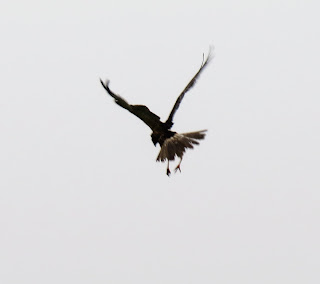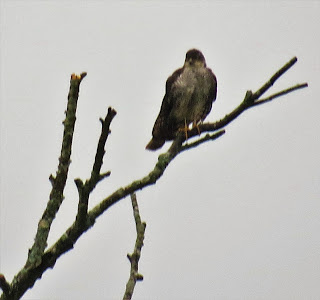 |
| Earlham Cemetery in summer |
June has been a very quiet month for my invertebrate challenge so far. Though I have added quite a few interesting species to my list, I haven't been able to tick off any of the remaining main targets this month. Despite my efforts, I just cannot find any of them. Thankfully, I have been tipped off recently to where I can find a couple of them by one of you guys (thank you James Emerson). Today, I decided to check them out. First up was a short ride to Earlham Cemetery for wool carder bees.
 |
| Woodpigeon |


 |
| Grey Squirrel |
 |
| Wool Carder Bee |
I was told to look for lamb's ear that was planted behind the hedge of the war graves area. Once we located these grey, hairy, purple-flowered plants, it wasn't long until I found what I was looking for. Wool carder bees are fond of these plants because they collect the hairy fuzz on the leaves to build their nests with, which is crafted within a hole in a tree or wall. The bee itself is like a large, furry honey bee that has a yellow wasp-like head. They also have rows of yellow spots lined down either side of the back of it's abdomen. This is the first time that I have seen one of these bees before and I have to admit, it is rather cute in a way. So if you have hairy plants in your garden, keep an eye out, you may have these fuzzy bees visiting them.
 |
| Hoverfly Myathropa florea |
During our short walk in the cemetery, we also saw a few other insects, such as brown hawker dragonflies, hoverflies and moths. But the other main highlight besides the wool carder bee was a green woodpecker. I heard it first, sounding rather alert as if in alarm. Then I managed to spot it taking off from a tombstone and into a tree. We had a couple more brief views of it flying from tree to tree, but it just wouldn't come down for us to get a better look at it.
 |
| Tachinid Fly |
 |
| Hoverfly (not sure which) |
After lunch, Mum and I then went for a walk around Whitlingham Broad. I was told that my hoverfly target (or targets since I muddled up the name with the drawing on my tick-sheet) was seen somewhere around here. Though I don't think we saw either a
Xanthogramma pedissequum or a
Leucozona lucorum, we did, however, saw a few hoverfly species that were pretty similar. I also saw plenty of other insects from butterflies to dragonflies as well as a whitethroat and the family of mute swans again.

 |
| Another Hoverfly that I don't know |
 |
| Some kind of Wasp (I didn't get the long antennae in shot) |
 |
| Alder Galls |
 |
| Dock Bug |
 |
| Azure Damselfly |
 |
| Ringlet |
 |
| Male Black-tailed Skimmer |
 |
| Female Black-tailed Skimmer |
 |
| Mute Swan |
 |
| Cygnets |
 |
| Canada Geese |
 |
| Whitethroat |




































































